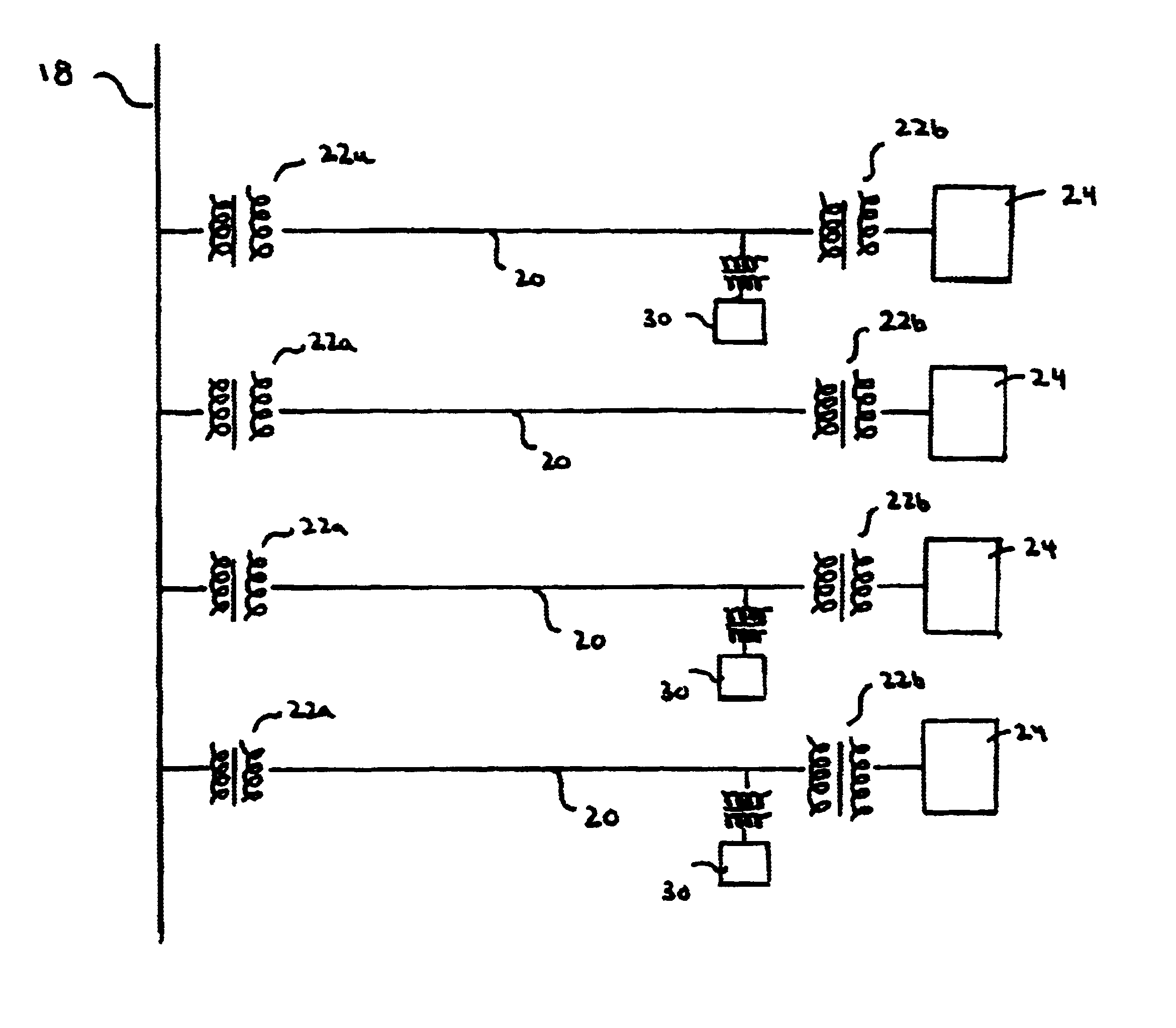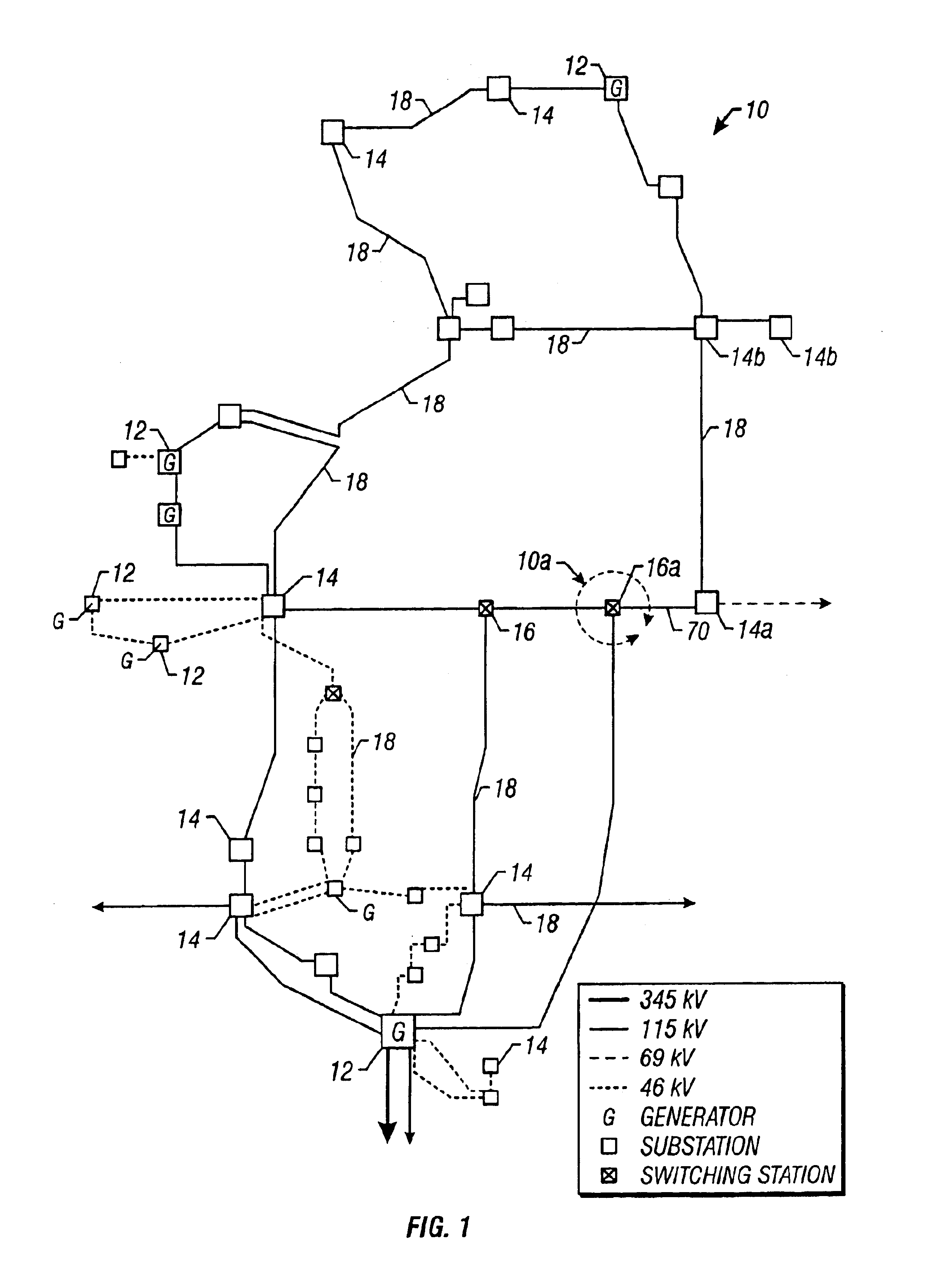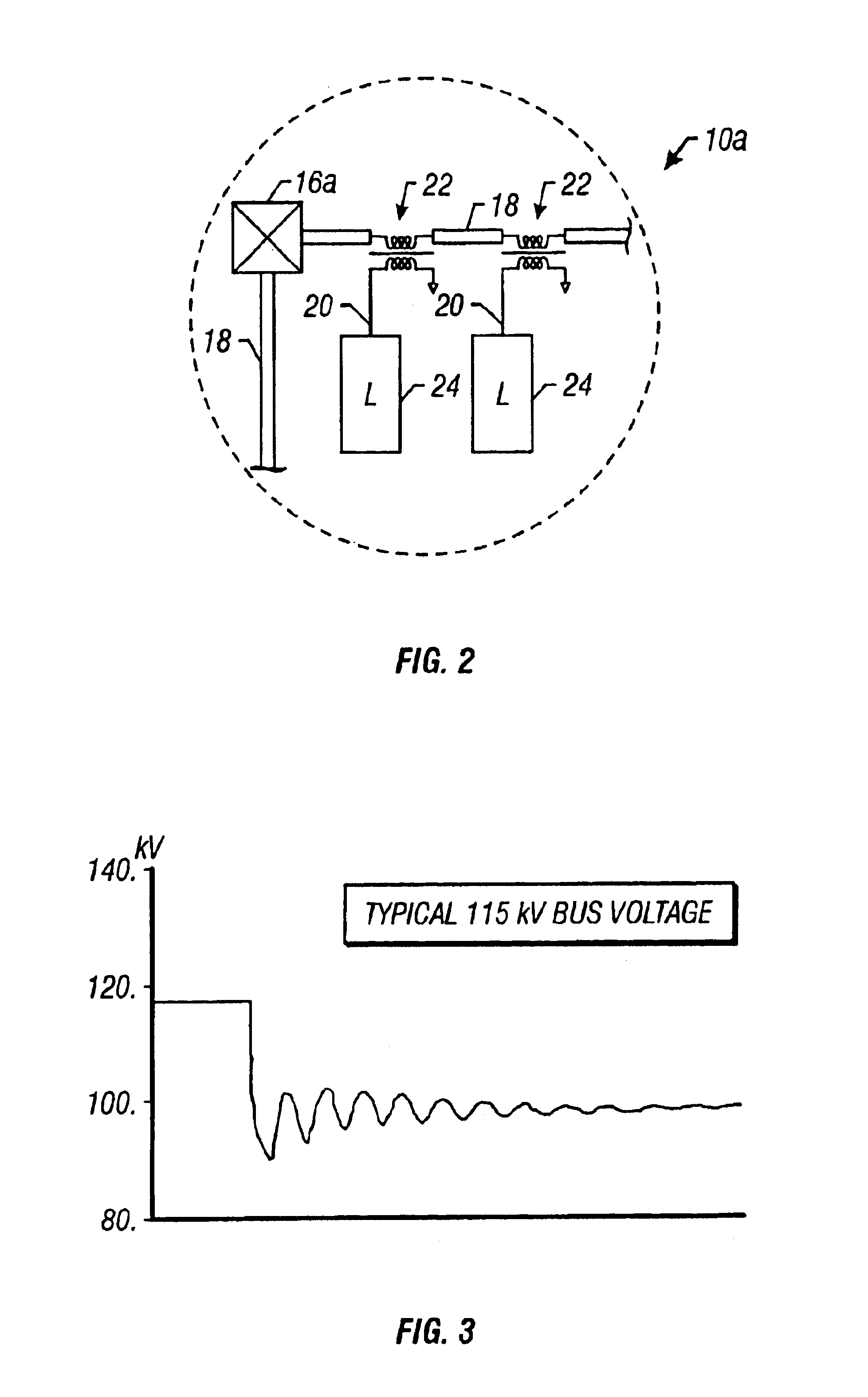Electric utility system with superconducting magnetic energy storage
a superconducting magnetic and energy storage technology, applied in the field of electric power utility networks, can solve problems such as voltage instability on the utility power grid, voltage collapse, voltage instability on the grid, etc., and achieve the effect of stabilizing voltage and reducing transmission losses
- Summary
- Abstract
- Description
- Claims
- Application Information
AI Technical Summary
Benefits of technology
Problems solved by technology
Method used
Image
Examples
Embodiment Construction
[0045]Referring to FIG. 4, a distributed SMES or D-SMES module 30 is shown connected in shunt with a distribution line 20 of a distribution line network. In general, D-SMES module 30 is capable of delivering both real and reactive power, separately or in combination, to a transmission line network. In this embodiment, D-SMES module 30 is sized at 2.8 MVA and is capable of delivering an average of 2 MWatts for periods as long as 400 milliseconds, 5.6 MVA for a full second, and 2.8 MVAR of reactive power indefinitely.
[0046]Distribution line 20 is shown connected to a transmission line 18 of the transmission line network through a first transformer 22a, which steps down the higher voltage (e.g., greater than 25 kV carried on transmission line 18 to a lower voltage, here 6kV. A second transformer 22b steps down the 6kV to a voltage suitable for a load 24, here 480 V.
[0047]D-SMES module 30 includes a superconducting magnetic energy storage unit 32 having an energy storage magnetic coil 3...
PUM
 Login to View More
Login to View More Abstract
Description
Claims
Application Information
 Login to View More
Login to View More - R&D
- Intellectual Property
- Life Sciences
- Materials
- Tech Scout
- Unparalleled Data Quality
- Higher Quality Content
- 60% Fewer Hallucinations
Browse by: Latest US Patents, China's latest patents, Technical Efficacy Thesaurus, Application Domain, Technology Topic, Popular Technical Reports.
© 2025 PatSnap. All rights reserved.Legal|Privacy policy|Modern Slavery Act Transparency Statement|Sitemap|About US| Contact US: help@patsnap.com



